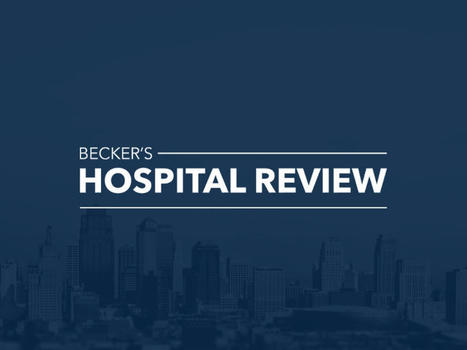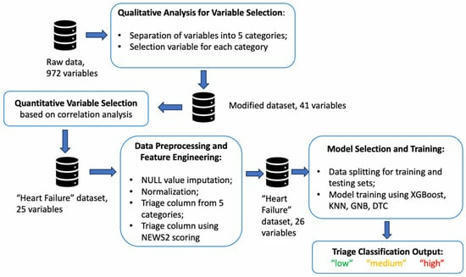WHAT IS ALREADY KNOWN ON THIS TOPICHealth centres offer enabling services, which seek to address non-clinical barriers to care and increase use of health centre services.Patients of health centres in areas of higher deprivation use more enabling services, and health centres in areas of higher deprivation have better clinical quality process performance for some measures.WHAT THIS STUDY ADDSAfter adjusting for service area deprivation and other patient and organisational differences, health centres with higher patient use of enabling services perform significantly better on most clinical process measures but not the clinical quality outcomes.HOW THIS STUDY MIGHT AFFECT RESEARCH, PRACTICE OR POLICYBetter clinical process performance by health centres with higher utilisation of enabling services shows that enabling services can help health centres address cold spots and mitigate some effects of social determinants of health.More research is needed to determine why increased use of enabling services improves process quality measures but not outcome quality measures and how staffing, funding and organisational capabilities, along with service area deprivation, influence these findings.IntroductionIt is well known that social determinants of health (SDOH) such as poverty, education, transportation and housing are more important predictors of health outcomes than biology, genes, behaviour or medical care.1–3 Further, these determinants are complex and often co-occur among populations and within neighbourhoods previously referred to as ‘cold spots’, defined as communities ‘that do not provide the essential opportunities for health: safe sidewalks, good air quality, social integration, grocery stores, education, employment, public health’.4 Improving health outcomes in these cold spots requires population health interventions (both clinical and non-clinical) that address issues such as housing and food insecurity, language translation and transportation.5–7 One successful care delivery model that addresses social determinants and their role in the health of populations living in cold spots is Community Oriented Primary Care (COPC). This model, wherein providers consider themselves responsible for the health of the community as a whole, was first introduced in the USA in the 1940s. Current COPC models integrate concepts from both public health and primary care and focus on addressing community-level determinants such as education, employment and housing to improve the health of the community.8 Full implementation of the COPC model requires data-driven identification of a community-level problem, intervention implementation and ongoing evaluation.9 The potential of effectively delivering this care model, particularly in a standardised way, has evolved with the advent of the electronic health record, readily available and accessible data, and innovative geospatial tools.9 10The health centre movement in the USA, embodied by the Health Resources and Services Administration’s (HRSA) Health Centre Programme, is built on the same principles that guide the COPC model. HRSA-funded health centres (henceforth referred to as health centres) are Federally Qualified Health Centres (FQHCs) receiving HRSA funding through Section 330 of the Public Health Service Act. Health centres serve the most vulnerable populations regardless of patients’ ability to pay and, in 2018, were nested in communities with higher proportions of racial/ethnic minorities (63%), poverty (91% at or below 200% federal poverty guideline, FPG) and Medicaid (49%) or uninsured (23%) patients. Nationwide in 2018, nearly 1400 health centre organisations served over 28 million patients at approximately 12 000 service delivery sites.11 This programme further exemplifies the COPC model by focusing on SDOH and community-oriented care, including their use of community and patient governing boards.12 13One way that health centres address potential barriers posed by SDOH is by providing enabling services. Enabling services are non-clinical supports, including transportation, interpretation, case management, home visits, benefit counselling, health education and community outreach, intended to increase access to care and improve health outcomes.14 Each health centre offers enabling services to best address specific SDOH needs within a community, and these vary by health centre.13 While the services mentioned above, as well as food and housing supports, are among those offered, most health centre enabling services staff deliver case management and community education and outreach. Although health centres are required to provide enabling services,12 they are often not reimbursed fully and funding for these services is often precarious.15 16 In fact, a recent survey showed that enabling services are among the first services health centres consider cutting when faced with budget issues.17 Having sustainable financial support for health centre enabling services is important, as research shows that addressing SDOH with enabling services further improves access to care and health outcomes as well as patient satisfaction across various healthcare settings.18 19Multiple studies have illustrated that providing access to transportation19 and translation services18 increases utilisation of preventive care and improves outcomes. Wright et al found that screening for and subsequently providing housing for people experiencing homelessness reduced healthcare spending, increased primary care visits, reduced emergency department visits and even increased subjective well-being.20 Research also shows that screening for food insecurity and making appropriate referrals improves health outcomes in children21 and adults.22Specific to health centres, researchers have found that patients who use enabling services are more likely to make visits, obtain routine checkups and receive influenza vaccinations.23 Additionally, research shows that pregnant health centre patients receive prenatal care earlier and have better perinatal outcomes when they have access to enabling services.24 Lastly, research shows that enabling services help reduce racial and ethnic disparities in healthcare access by removing the barriers these populations are most likely to face.25While research has shown the effectiveness of enabling services in terms of increased utilisation, better health outcomes and increased satisfaction, little is known about the relationship between enabling services and health centre clinical quality performance as it pertains to chronic condition management and preventive services. Our previous research found that health centres with higher levels of service area-level social deprivation, measured using an index composed of education, housing, poverty and race,26 provided more enabling services and had better clinical quality process performance for some measures.27 This led us to question whether enabling services have a mitigating effect on community-level social deprivation. Thus, we explore whether health centres with higher percentages of patients using enabling services have better clinical quality outcomes. More specifically, we test whether health centres with higher percentages of patients using enabling services perform better than expected for clinical quality measures after adjusting for patient, health centre and service area characteristics.MethodsDataWe used 2018 Uniform Data System (UDS) data for Health Centre Programme awardees.28 Variables included two clinical quality outcome measures, including the percentage of hypertensive patients ages 18–84 with high blood pressure (BP) that is controlled (BP<140/90 mm Hg) and the percentage of diabetic patients ages 18–74 with poor haemoglobin A1c control (>9%). We also explored ten process measures, including the percentage of patients 18 years and older with body mass index (BMI) documented and follow-up plan documented if BMI is outside normal parameters (BMI screening and follow-up plan for adults), the percentage of women ages 23–64 who were screened for cervical cancer (cervical cancer screening), the percentage of children 2 years of age who received age appropriate vaccines by their second birthday (childhood immunisation status), the percentage of patients 50–74 years of age who had appropriate screening for colorectal cancer (colorectal cancer screening), the percentage of patients ages 21 and older at high risk of cardiovascular events who were prescribed or were on statin therapy (statin therapy), the percentage of patients ages 18 and older with diagnosis of ischaemic vascular disease (IVD) or acute myocardial infarction with aspirin or another platelet (IVD: use of aspiring or another platelet), the percentage of patients ages 12 and older who were screened positive for depression and had follow-up plan documented (screening for depression and follow-up plan), the percentage of patients ages 18 and older who were screened for yes tobacco and received cessation counselling intervention, the percentage of patients 5–64 identified as having persistent asthma and were appropriately ordered medication (use of appropriate medications for asthma), and the percentage of patients ages 3–16 with BMI percentile and counselling on nutrition and physical activity documented (weight assessment and counselling for nutrition and physical activity for children and adolescents). We controlled for variables reflecting differences in the patient population (the percentage of uninsured patients, the percentage of ethnic and racial minority patients, the percentage of patients ages 65 and older and the percentage of patients with hypertension), variations in health centre size (a categorical variable for ‘large’ health centres defined by health centres with greater than the median number of patients), and disparity of the surrounding community (weighted service area-level social deprivation, an index composed of education, housing, poverty and race variables, previously used by researchers to identify cold spots).26 We selected performance and control variables and constructs based on previous research, and created a correlation matrix consisting of several variables that have been shown to influence health centre performance. Health centres were also stratified by quartile based on the percentage of patients using enabling services, which are defined as ‘non-clinical services that aim to increase access to healthcare, and improve health outcomes’.25 Enabling services include visits for services such as language interpretation or translation, food and housing assistance, transportation, programme eligibility assistance, child care and case management.AnalysisFirst, we calculated a service area social deprivation score for each health centre organisation, weighted by the number of patients (see online supplemental file for detailed methods27). Next, we removed all health centres that were missing data for clinical quality measures (n=184). We removed health centres that received homeless funding (n=272) as they have significantly different patient characteristics than other health centres and many of these health centres had outlier values for clinical quality measures. Next, we used ordinary least squares to calculate adjusted clinical quality measures controlling for health centre patient characteristics, size and service area characteristics. Finally, we performed an analysis of variance to compare clinical quality outcome and process measures across enabling services quartiles to determine whether health centres providing more enabling services had better performance for clinical quality measures.Supplemental material[fmch-2023-002227supp001.pdf]ResultsTable 1 shows patient and organisational characteristics of 875 health centres sorted by utilisation of enabling services with quartile 1 (Q1) representing the quartile of health centres with lowest utilisation of enabling services and quartile 4 (Q4) representing the highest. Health centres with higher utilisation tended to be larger with more patients (22 462 patients in Q4 vs 13 557 in Q1), more full-time equivalents (63.8 medical FTEs vs 40.2 medical FTEs), and received larger grants through HRSA (US$3.3M vs US$2.4M). Social Deprivation Index (SDI) service area scores were also higher among health centres with higher utilisation of enabling services. When comparing patients in health centres with more utilisation of enabling services, patients were more likely to be between ages of 18–64 years old (compared with less than 18 or over 65), and most were racial/ethnic minorities (64.8% in Q4 vs 42.9% in Q1). More specifically, patients in health centres with high utilisation of enabling services were more likely to be (non-Hispanic) black (23.7% in Q4 vs 16.8% in Q1), (non-Hispanic) Asian (6.7% vs 2.8%), (non-Hispanic) Native Hawaiian/Other Pacific Islander (1.6% vs 1.1%) and Hispanic/Latino (36% vs 18.9%). Health centres with high utilisation of enabling services also had more patients who are best served in a language other than English (11.8% in Q1 vs 26.6% in Q4). Health centres with higher utilisation of enabling services had more patients that were uninsured (29.0% in Q4 vs 22.5% in Q1) or were on Medicaid (41.8% vs 39.3%) and were more likely to be serving patients of lower income with 64.8% at or below 100% FPG in Q4 vs 58.4% in Q1.View inline View popup Table 1 Characteristics by enabling services quartileTable 2 displays health centre unadjusted clinical quality measures by enabling service quartile. For most of the clinical quality process measures, the unadjusted results show a linear relationship across enabling services quartiles—meaning that the health centres providing more enabling services performed better than health centres providing fewer enabling services. However, while health centres in the lowest quartile (Q1) for enabling services provision had the worst quality scores for all measures, health centres in the second or third quartile (Q3) for enabling services performed better than health centres in the fourth quartile (Q4) for several process measures, including lipid therapy for patients with coronary artery disease patients and use of appropriate medications for asthma, and for both outcome measures. The largest differences between the fourth and first quartile were seen in cervical cancer screening (9.0% difference between Q4 and Q1), child/adolescent weight assessment and counselling (8.5% difference), and childhood immunisations (8.1% difference). Taking a closer look at outcome measures, there were statistically significant differences across enabling services quartiles where health centres in the lowest quartile for enabling services performed the worst for both outcome measures.View inline View popup Table 2 Quality measures by enabling services quartileTable 3 displays the adjusted values for clinical quality measures. After adjusting for patient characteristics (the percentage of uninsured patients, the percentage of ethnic and racial minority patients, the percentage of patients ages 65 and older and the percentage of patients with hypertension), health centre size and social deprivation, we found significant differences across enabling services quartiles for all process measures, with health centres in the highest enabling services quartile performing significantly better than health centres in the lowest enabling services quartile for all measures except IVD patients use of aspirin or another antiplatelet. Similar to the unadjusted results, clinical quality process scores were mostly linear across health centre enabling services quartiles—though health centres in the second (Q2) or third (Q3) quartile performed better than health centres in the fourth quartile (Q4) for colorectal cancer screening, IVD patients use of aspirin or another antiplatelet, and tobacco use screening and cessation. While results were statistically significant for outcome measures, health centres with highest utilisation of enabling services did worse in controlling high BP (1.3% lower) and had more (2.2%) patients with uncontrolled diabetes. As in the unadjusted measures, the biggest differences across quartiles are seen in child/adolescent weight assessment and counselling (2.8%), childhood immunisations (2.7%) and cervical cancer screening (2.6%).View inline View popup Table 3 Adjusted quality measures by enabling services quartileDiscussionThe patient characteristics associated with health centres providing more enabling services suggest these health centres serve racially and ethnically diverse communities and serve larger percentages of medically underserved populations as indicated by higher SDI, rates of uninsured or Medicaid patients, and proportion of patients with incomes below FPGs. Despite this, health centres with highest utilisation of enabling services indicated statistically significant improvements in clinical quality measures. These measures can be grouped by preventive screening measures (adult BMI screening and counselling, child/adolescent weight screening and counselling), adherence to clinical guidelines for treatment (lipid therapy, appropriate use for aspirin, appropriate medications for asthma, childhood immunisation) and cancer screening (cervical and colorectal). Improvements in clinical diabetes outcomes were significant in bivariate and multivariate analyses. After adjusting for characteristics that may be attributed to economies of scale such as the size of health centres and controlling for patient characteristics and community factors reflected in SDI, health centres with high utilisation of enabling services demonstrated statistically better performance in 8 of the 10 process measures but worse performance in outcome measures.Previous research on process measures23 suggests that health centres are mitigating some effects of SDOH and contributing to health equity by using enabling services.25 Enabling services focus on a community’s unique assets and vulnerabilities and can help address cold spots, as exemplified by the COPC model.8 Addressing these cold spots, rather than individual high-risk patients, has been shown to better improve health outcomes. These findings emphasise the importance of how enabling services (eg, translation services, transportation) can address unmet social needs and improve utilisation of health services. While health centres have been offering enabling services for decades, an increasing number of other types of organisations are also offering non-clinical supports.15 29 These programmes, which currently have limited research on clinical outcomes,29 could look to the Health Centre Programme as a model which successfully offers services to address non-clinical barriers to care. Further, this research supports a broader view of clinical care that includes non-clinical solutions (ie, enabling services that address SDOH) for addressing self-management if true improvements in clinical outcomes are to be achieved.30As mentioned above, even when controlling for size differences, disproportionate representation of certain conditions, and sociodemographic differences in the patient population and surrounding communities across health centres, health centres with high utilisation of enabling services showed worse performance in controlling hypertension and diabetes. These findings suggest enabling services may have a stronger positive correlation with process measures than with outcome measures. It is unlikely that enabling services have a detrimental effect on outcome measures, and more plausible that enabling services are unable to attenuate the poorer outcomes in more vulnerable populations.27 This is not surprising, as health centres are intentionally nested in communities of greatest need. Furthermore, we were unable to account for the temporal aspects of the dynamic relationship between enabling services provision and measures of health outcomes given the cross-sectional nature of the UDS. More research is needed to better understand how structural measures such as staffing mix or organisational capabilities, clinical process measures and clinical outcome measures are related.There were a few limitations in this study. While data on FTEs in enabling services were available, we did not have data on patient utilisation of enabling services, meaning that we know if patients were using some type of enabling service but do not have details on the type of enabling service being provided. Improving data granularity to capture utilisation (patients or visits) of specific types of enabling services provided would allow researchers to measure the mitigation efforts of providing enabling services on SDOH. This research was limited to less than 80% of all health centres due to missing data and elimination of health centres with only homeless funding. Future research ideas include examining which enabling services have the most impact on quality, whether the provision of enabling services impacts quality in health centres in or next to public housing facilities, and what geographical variation, if any, exists in the impact of enabling services on quality. Further, exploring the impact of enabling services for health centres with homeless funding is an area of future inquiry. An additional limitation is related to how enabling services utilisation are defined as patients receiving care from enabling services providers, which in some cases are referrals for housing or food assistance. There are no data related to whether patients followed through on the referral and received those services.This research provides further evidence on the effectiveness of enabling services, both in addressing SDOH and in improving health outcomes. Yet, health centres face many difficulties in funding these services. While research shows that the provision of enabling services saves money long term,20 enabling services are not adequately funded.12 13 15 31 In fact, enabling services are the first programmes cut during financially difficult times.17 32–34 This study provides insights to address the importance of enabling services and their financial sustainability.HRSA currently supplements the provision of enabling services through the HRSA National Training and Technical Assistance Partners programme, which supports health centres in several areas including working with individuals and families experiencing housing insecurity and targeted support for underserved populations and the social insecurities they may encounter. Beyond this, while some health centres were primarily established as community supports, others have turned to creative ways to fund enabling services, including cross-sector collaborations.35 Health centres are successfully partnering with food banks, grocery stores,36 supportive housing providers37 and local transit systems38 to deliver enabling services. Enabling services can continue to assist health centres in serving the most vulnerable populations, addressing cold spots and delivering community-oriented primary care, all of which reduce overall healthcare spending and contribute to the overarching goal of health equity.23 39ConclusionAs demonstrated, health centres with higher utilisation of enabling services demonstrate statistically significant improvements in process measures. The higher utilisation of enabling services also allows health centres to address cold spots and mitigate some effects of SDOH by promoting health equity. These key findings underscore the importance of enabling services, especially in communities with the highest need.Even though current reimbursement policy for providing enabling services is lacking, health centres understand the value of providing enabling services due to their ability to positively influence patient health outcomes. Financial support provided to FQHCs in the form of 330 grant dollars are particularly important to help offset the cost of enabling services for health centres with less financial support and less profit.By using the Health Centre Programme as a model, the case for long-term, sustainable financial support of enabling service programmes is one of the many elements needed in order to improve the health of the most vulnerable populations and start addressing health inequities. Future research is needed on the influence of staffing, funding and organisational capabilities on clinical outcomes in the most vulnerable communities.Data availability statementData may be obtained from a third party and are not publicly available.Ethics statementsPatient consent for publicationNot applicable.Ethics approvalThis research involved secondary data analysis of health centre administrative -level data and did not require approval from an institutional review board (IRB).References↵Braveman PA, Cubbin C, Egerter S, et al. Socioeconomic disparities in health in the United States: what the patterns tell us. Am J Public Health 2010;100 Suppl 1:S186–96. doi:10.2105/AJPH.2009.166082OpenUrlPubMed↵Braveman P, Gottlieb L. The social determinants of health: it's time to consider the causes of the causes. Public Health Rep 2014;129 Suppl 2:19–31. doi:10.1177/00333549141291S206OpenUrlCrossRefPubMed↵Marmot MG, Wilkinson RG. Social determinants of health2nd edn. Oxford: Oxford University Press, 2006. doi:10.1093/acprof:oso/9780198565895.001.0001↵Westfall JM. Cold-spotting: linking primary care and public health to create communities of solution. J Am Board Fam Med 2013;26:239–40. doi:10.3122/jabfm.2013.03.130094OpenUrlAbstract/FREE Full Text↵Taylor LA, Tan AX, Coyle CE, et al. Leveraging the social determinants of health: what works PLoS One 2016;11:e0160217. doi:10.1371/journal.pone.0160217↵Baum FE, Legge DG, Freeman T, et al. The potential for multi-disciplinary primary health care services to take action on the social determinants of health: actions and constraints. BMC Public Health 2013;13:460. doi:10.1186/1471-2458-13-460↵Andermann A. Screening for social determinants of health in clinical care: moving from the margins to the mainstream. Public Health Rev 2018;39:19. doi:10.1186/s40985-018-0094-7↵Folsom Group. Communities of solution: the Folsom report revisited. Ann Fam Med 2012;10:250–60. doi:10.1370/afm.1350OpenUrlAbstract/FREE Full Text↵Liaw W, Rankin J, Bazemore A, et al. Teaching population health: community-oriented primary care revisited. Acad Med 2017;92:419. doi:10.1097/ACM.0000000000001552OpenUrl↵National Academies of Science. Integrating social care into the delivery of health care: moving upstream to improve the nation’s health. 2019. Available: https://www.nationalacademies.org/our-work/integrating-social-needs-care-into-the-delivery-of-health-care-to-improve-the-nations-health [Accessed 4 Feb 2022].↵Health Resources and Services Administration, Health Center Program. Health center program: impact and growth. 2018. Available: https://bphc.hrsa.gov/sites/default/files/bphc/about/healthcenterfactsheet.pdf [Accessed 1 Feb 2022].↵Institute for Alternative Futures. Community health centers leveraging the social determinants of health. 2012. Available: https://kresge.org/sites/default/files/IAF-CHCsLeveragingSDH.pdf [Accessed 4 Feb 2022].↵Weir RC, Proser M. Highlighting the role of enabling services at community health centers: collecting data to support service expansion and enhanced funding. Available: http://www.nachc.org/wp-content/uploads/2015/06/EnablingServicesReport.pdf [Accessed 4 Feb 2022].↵Health Resources and Services Administration, Health Center Program. Health center program terms and definitions. Available: https://www.hrsa.gov/sites/default/files/grants/apply/assistance/Buckets/definitions.pdf [Accessed 15 Jan 2022].↵Gottlieb L, Razon N, Aboelata N. How do safety net clinics pay for social care programs? 2019. Available: https://sirenetwork.ucsf.edu/sites/default/files/2021-02/how-do-safety-net-clinics-pay-for-social-care-programs.pdf↵Wells R, Punekar RS, Vasey J. Why do some health centers provide more enabling services than others J Health Care Poor Underserved 2009;20:507–23. doi:10.1353/hpu.0.0151OpenUrl↵Henry J. Kaiser family foundation. Community health centers prepare for funding uncertainty. 2019. Available: https://www.kff.org/medicaid/issue-brief/community-health-centers-prepare-for-funding-uncertainty/ [Accessed 15 Dec 2021].↵Ngo-Metzger Q, Sorkin DH, Phillips RS, et al. Providing high-quality care for limited English proficient patients: the importance of language concordance and interpreter use. J Gen Intern Med 2007;22 Suppl 2:324–30. doi:10.1007/s11606-007-0340-zOpenUrlPubMed↵Syed ST, Gerber BS, Sharp LK. Traveling towards disease: transportation barriers to health care access. J Community Health 2013;38:976–93. doi:10.1007/s10900-013-9681-1OpenUrlCrossRefPubMedWeb of Science↵Wright BJ, Vartanian KB, Li H-F, et al. Formerly homeless people had lower overall health care expenditures after moving into supportive housing. Health Aff (Millwood) 2016;35:20–7. doi:10.1377/hlthaff.2015.0393OpenUrlAbstract/FREE Full Text↵Knowles M, Khan S, Palakshappa D, et al. Successes, challenges, and considerations for integrating referral into food insecurity screening in pediatric settings. J Health Care Poor Underserved 2018;29:181–91. doi:10.1353/hpu.2018.0012OpenUrlCrossRef↵Gundersen C, Engelhard EE, Crumbaugh AS, et al. Brief assessment of food insecurity accurately identifies high-risk US adults. Public Health Nutr 2017;20:1367–71. doi:10.1017/S1368980017000180OpenUrlPubMed↵Yue D, Pourat N, Chen X, et al. Enabling services improve access to care, preventive services, and satisfaction among health center patients. Health Aff (Millwood) 2019;38:1468–74. doi:10.1377/hlthaff.2018.05228OpenUrlCrossRefPubMed↵Shi L, Stevens GD. The role of community health centers in delivering primary care to the underserved: experiences of the uninsured and medicaid insured. J Ambul Care Manage 2007;30:159–70. doi:10.1097/01.JAC.0000264606.50123.6dOpenUrlCrossRefPubMed↵Park HL. Enabling services at health centers: eliminating disparities and improving quality. 2006. Available: https://www.aapcho.org/wp/wp-content/uploads/2012/03/ES-Metlife-Report.pdf [Accessed 14 Jan 2022].↵Robert Graham Center. Social deprivation index (SDI). 2018. Available: https://www.graham-center.org/rgc/maps-data-tools/sdi/social-deprivation-index.html [Accessed 12 Dec 2021].↵Topmiller M, McCann J, Rankin J, et al. Exploring the Association of social determinants of health and clinical quality measures and performance in HRSA-funded health centers. Fam Med Community Health 2021;9:e000853. doi:10.1136/fmch-2020-000853↵Health Resources and Services Administration, Health Center Program. Uniform data system. 2018. Available: https://data.hrsa.gov/tools/data-reporting/program-data [Accessed 15 Nov 2021].↵Plough AL. Building a culture of health: a critical role for public health services and systems research. Am J Public Health 2015;105 Suppl 2:S150–2. doi:10.2105/AJPH.2014.302410OpenUrl↵Frier A, Devine S, Barnett F, et al. Incorporating social determinants of health into individual care - a multidisciplinary perspective of health professionals who work with people who have type 2 diabetes. PLoS ONE 2022;17:e0271980. doi:10.1371/journal.pone.0271980↵Gottlieb LM, Wing H, Adler NE. A systematic review of interventions on patients' social and economic needs. Am J Prev Med 2017;53:719–29. doi:10.1016/j.amepre.2017.05.011OpenUrlCrossRefPubMed↵Feldman R, Deitz DM, Brooks EF. The financial viability of rural primary health care centers. Am J Public Health 1978;68:981–8. doi:10.2105/ajph.68.10.981OpenUrlCrossRefPubMed↵Hoag SD, Norton SA, Rajan S. Federally qualified health centers: surviving Medicaid managed care, but not thriving. Health Care Financ Rev 2000;22:103–17.OpenUrlPubMedWeb of Science↵U.S. Government Accountability Office. Community health centers: adapting to changing health care environment key to continued success (GAO report no.HEHS-00-39). 2000. Available: https://www.gao.gov/assets/hehs-00-39.pdf [Accessed 2 Feb 2022].↵Clark A, Walker DM, Headings A. Addressing food insecurity in clinical care: lessons from the mid-Ohio Farmacy experience. 2020. Available: https://www.healthaffairs.org/do/10.1377/hblog20191220.448706/full/ [Accessed 15 Feb 2022].↵National Association of Community Health Centers. Community health centers as food oasis partners: addressing food insecurity for patients and communities. 2017. Available: https://www.nachc.org/wp-content/uploads/2017/10/NACHC_FIToolkit_WEB_v1.pdf [Accessed 10 Feb 2022].↵Spillman BC, Leopold J, Allen EH, et al. Developing housing and health collaborations: opportunities and challenges. 2016. Available: https://www.urban.org/sites/default/files/publication/89581/hh_brief_final_1.pdf [Accessed 10 Jan 2021].↵National Academies of Sciences, Engineering, and Medicine, Transportation Research Board, Health and Medicine Division, and Board on Population Health and Public Health Practice. Exploring data and Metrics of value at the intersection of health care and transportation: proceedings of a workshop. 2016. Available: https://www.ncbi.nlm.nih.gov/books/NBK402420/ [Accessed 15 Dec 2021].↵Pourat N, Chen X, Lee C, et al. Improving outcomes of care for HRSA-funded health center patients who have mental health conditions and substance use disorders. J Behav Health Serv Res 2020;47:168–88. doi:10.1007/s11414-019-09665-5OpenUrl

|
Scooped by
Emmanuel Capitaine
onto Digitized Health |
No comment yet.
Sign up to comment





 Your new post is loading...
Your new post is loading...

![FuturHealth Review [Save Up To 40%] Same Day Online Doctor Semaglutide Telemedicine Prescriptions? (Overnight Delivery) – | Digitized Health | Scoop.it](https://img.scoop.it/fLoM-cPCiIhPq3n17dGYATl72eJkfbmt4t8yenImKBVvK0kTmF0xjctABnaLJIm9)
























